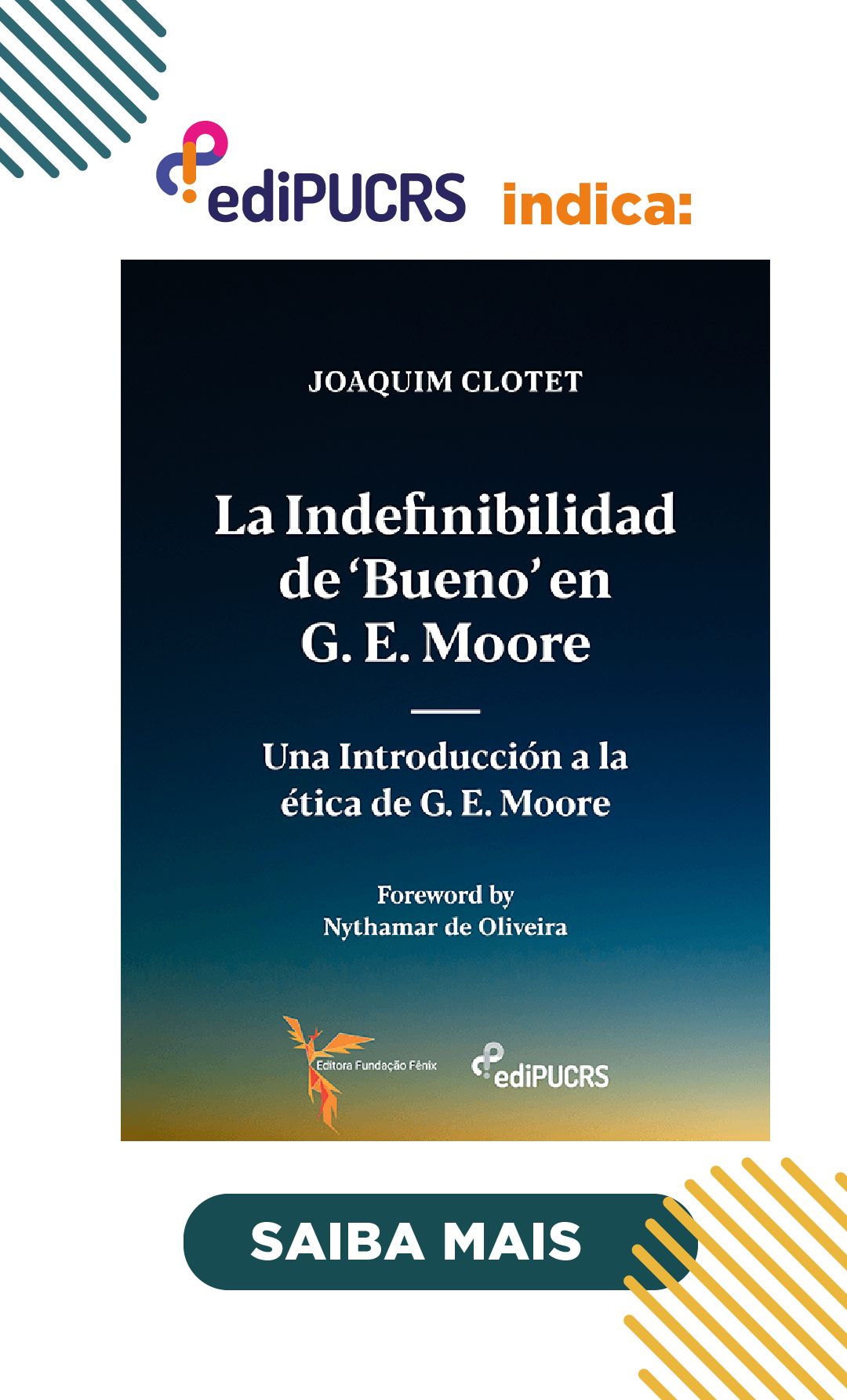Remarks on the triune brain theory and its relevance to a philosophy of mind and emotions
DOI:
https://doi.org/10.15448/1984-6746.2015.2.21861Keywords:
Evolution. Philosophy of biology. Philosophy of emotions. Philosophy of mind. Neurophilosophy. Triune brain theory.Abstract
This article establishes some fundamental relationships between evolution and triune brain theory, as well as the relevance of the latter for the empirical foundations of a philosophy of mind and emotions. In the first section, some tenets of Ronald de Sousa in the already classic article “The Mind’s Bermuda Triangle: Philosophy of Emotions and Empirical Science”, part of Oxford Handbook of Philosophy of Emotions, will especially be considered. The second section discusses the validity of the theory of the “triune brain” as a neuroethological evolutionary approach, outlining its tripartite division and analyzing criticism and praise of its ideas. The section also considers remarks from important neuroscientists in the field of emotions, such as Ledoux and Panksepp. In the third section, I take into account a paper by Pollen and Hofmann which puts forward new contemporary approaches to the understanding of brain evolution. As a conclusion, I delineate a framework for the relationship between neuroscience and the philosophical study of emotions presented as a research agenda.
Downloads
References
BUTLER A. B.; HODOS, W. Comparative Vertebrate Neuroanatomy. Evolution and adaptation. 2. ed. Hoboken: John Wiley & Sons, 1996.
CHIEL, H. J.; BEER, R. D. “The brain has a body: adaptive behavior emerges from interactions of nervous system, body and environment”. Trends in Neuroscience, 20 (1997), p. 553-557. DOI: https://doi.org/10.1016/S0166-2236(97)01149-1
CORY JR., G. A.; GARDNER JR., R. (Org.). The evolutionary neuroethology of Paul MacLean, Jr. Prefácio de PANKSEPP, J. Westporet: Praeger Publishers, 2002.
DE SOUSA, R. The mind’s Bermuda Triangle: Philosophy of emotions and empirical science. In: GOLDIE, P. (Org.). The Oxford Handbook of Philosophy of Emotion. Oxford: Oxford University Press, 2012.
ELDREGDE, N.; GOULD, S. J. Punctuated equilibria: an alternative to phyletic gradualism. In: SCHOPF, T. J. M. (Org.). Models in paleobiology. San Francisco: Cooper & Co, 1972. DOI: https://doi.org/10.5531/sd.paleo.7
GAZZANIGA, M. S. The social brain. New York: Basic Books, 1985.
GIBSON, J. J. The theory of Affordances. In: SHAW, R.; BRANSFORD, J. (Ed.). Perceiving, acting, and knowing. Hillsdale, New Jersey: Lawrence Erlbaum Associates, 1977.
GOULD, S. J.; ELDREDGE, N. Punctuated equilibria: the tempo and mode of evolution reconsidered. Paleobiology, v. 3, n. 2, 1977, p. 115-151. DOI: https://doi.org/10.1017/S0094837300005224
GOULD, S. J.; ELDREDGE, N. “Punctuated equilibrium comes of age”. Nature, 366 (1993 Nov.), p. 223-227. DOI: https://doi.org/10.1038/366223a0
HERRICK, C. J. The Brain of the Tiger Salamander. Chicago: University of Chicago Press, 1948. DOI: https://doi.org/10.5962/bhl.title.6375
HOBOLTH, A.; CHRISTENSEN, O. F.; MAILUND, T.; SCHIERUP, M. H. “Genomic Relationships and Speciation Times of Human, Chimpanzee, and Gorilla Inferred from a Coalescent Hidden Markov Model”. PLoS Genetics, 3, 2 (2007). DOI: https://doi.org/10.1371/journal.pgen.0030007
JANVIER, P. “Catching the first fish”. Nature, 402 (1999 Nov.), p. 21. DOI: https://doi.org/10.1038/46909
LEDOUX, J. “Emotion circuits in the brain”. Annual Review of Neuroscience, 23 (2000), p. 155-184. DOI: https://doi.org/10.1146/annurev.neuro.23.1.155
LEDOUX, J. (Entrevista). In: GAZZANIGA, M. S.; IVRY, R. B.; MANGUN, G. R. Cognitive Neuroscience: the biology of mind. New York: William Warder Norton & Company, 1998.
LEIBNIZ, G. W. Nouveaux Essais sur l’entendement humain. Paris: Ernest Flammarion, 1921.
MacLEAN, P. D. The triune brain, emotion and scientific bias. In: Schmidtt ,F. O. (Ed.). The Neurosciences Second Study Program. New York: The Rockefeler University Press, 1970.
MacLEAN, P. D. The triune brain in evolution – Role in paleocerebral functions. New York: Plenum Press, 1990.
MAYR E. This is biology: the science of the living world. Cambridge: Belknap Press of Harvard University Press, 1997.
PANKSEPP, J. Affective neuroscience: the foundations of human and animal emotions. New York: Oxford University Press, 1998.
PAPEZ, J. “A proposed mechanism of emotion”. Journal of Neuropsychiatry and Clinical Neuroscience, 7 (1937), p. 103-112. Plato . The Republic. Translated by B. Jowett. <http://classics.mit.edu/Plato/
republic.html>. Plato . Timaeus: Timaeus. Bilingual version English/Greek. Translated by B. Jowett. <http://www.ellopos.net/elpenor/physis/plato-timaeus/default.asp>.
POLLEN, A. A.; HOFMANN, J. A. Beyond neuroanatomy: novel approaches to studying brain evolution. Brain Behavioural Evolution, n. 72, 2008, p. 145-158. DOI: https://doi.org/10.1159/000151474
PRIGOGINE, I. Fim das certezas: tempo, caos e as leis da natureza. São Paulo: Fundação Editora da UNESP, 1996.
SHU, D.-G.; LUO, H.-L.; CONWAY MORRIS, S. et al. Lower Cambrian Vertebrates from south China. Nature, 402 (1999 Nov.), p. 42. DOI: https://doi.org/10.1038/46965
SIMPSON, G. G. Life of the past: introduction to paleonthology. New Haven: Yale University Press, 1953.
VON BAER, K. E. Entwicklungsgeschichte der Thiere: Beobachtung und Refexion. Könisgberg: Bornträger, 1928.
Downloads
Published
How to Cite
Issue
Section
License
Copyright
The submission of originals to Revista Veritas implies the transfer by the authors of the right for publication. Authors retain copyright and grant the journal right of first publication. If the authors wish to include the same data into another publication, they must cite Revista Veritas as the site of original publication.
Creative Commons License
Except where otherwise specified, material published in this journal is licensed under a Creative Commons Attribution 4.0 International license, which allows unrestricted use, distribution and reproduction in any medium, provided the original publication is correctly cited. Copyright: © 2006-2020 EDIPUCRS</p





